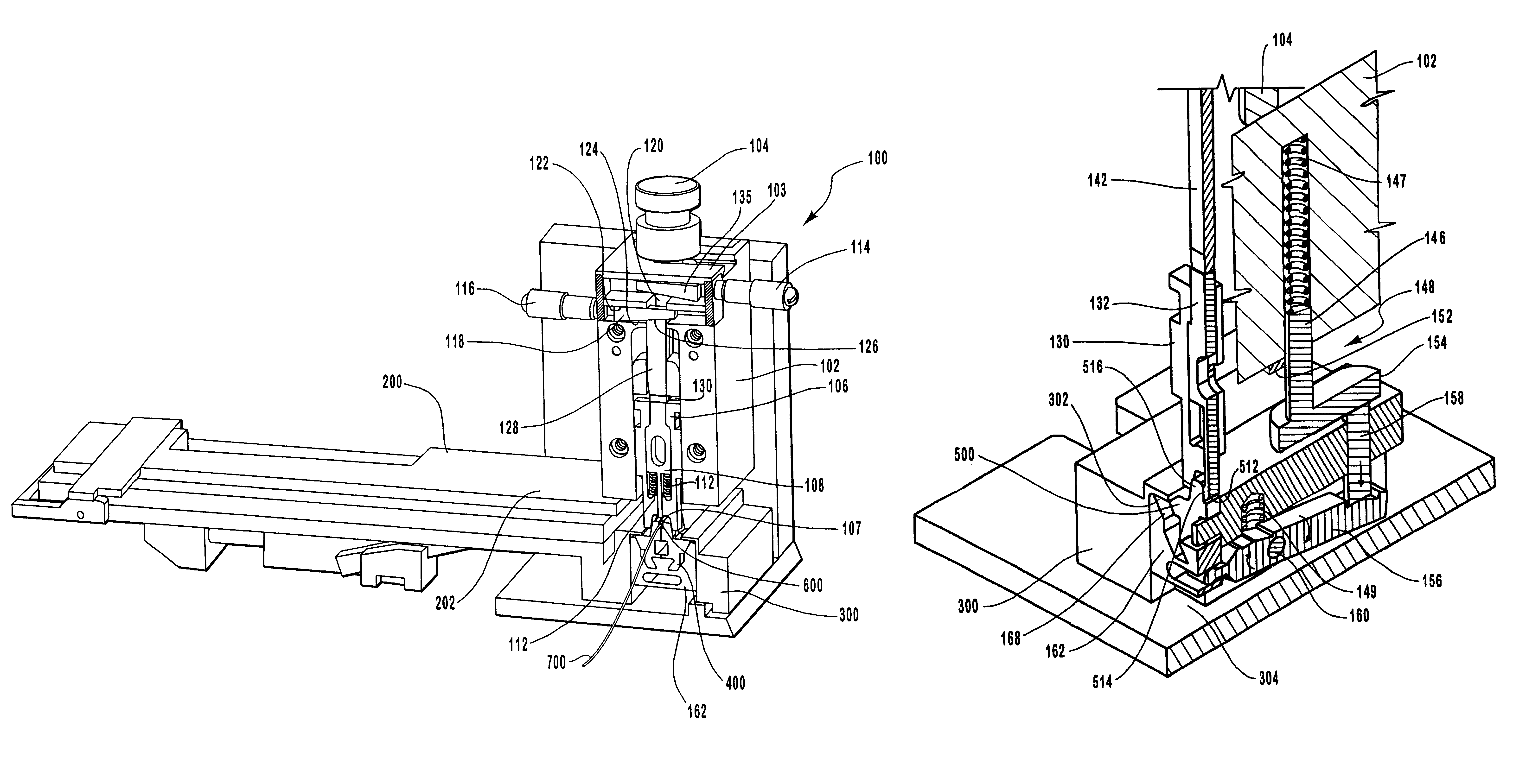Applicator die for wire-to-terminal assembly
a technology of application die and assembly, which is applied in the direction of manufacturing tools, other manufacturing equipment/tools, and shaping tools, etc., can solve the problems of degrading the quality of the mechanical connection that is produced, other known crimping methods and machinery, and suffering from a variety of significant shortcomings. , to achieve the effect of reducing replacement costs and preventing premature wear
- Summary
- Abstract
- Description
- Claims
- Application Information
AI Technical Summary
Benefits of technology
Problems solved by technology
Method used
Image
Examples
Embodiment Construction
Reference will now be made to figures wherein like structures will be provided with like reference designations. It is to be understood that the drawings are diagrammatic and schematic representations of one embodiment of the invention, and are not to be construed as limiting the present invention. Nor are the drawings necessarily drawn to scale.
The present invention relates to an applicator die for use in crimping terminals to conducting wires. FIGS. 1 through 5b indicate various embodiments of an applicator die conforming to the teachings of the invention. One embodiment of a crimping applicator is generally indicated in FIG. 1 as 100. Crimping applicator 100 includes an applicator housing 102 and is located at the terminal end 202 of a feed table 200. In one embodiment, applicator housing 102 comprises a steel material or the like. For example, in one embodiment applicator housing 102 is composed of 4140 steel. It will be appreciated that various other steel alloys and other type...
PUM
| Property | Measurement | Unit |
|---|---|---|
| angle | aaaaa | aaaaa |
| applicator force | aaaaa | aaaaa |
| force | aaaaa | aaaaa |
Abstract
Description
Claims
Application Information
 Login to View More
Login to View More - R&D
- Intellectual Property
- Life Sciences
- Materials
- Tech Scout
- Unparalleled Data Quality
- Higher Quality Content
- 60% Fewer Hallucinations
Browse by: Latest US Patents, China's latest patents, Technical Efficacy Thesaurus, Application Domain, Technology Topic, Popular Technical Reports.
© 2025 PatSnap. All rights reserved.Legal|Privacy policy|Modern Slavery Act Transparency Statement|Sitemap|About US| Contact US: help@patsnap.com



